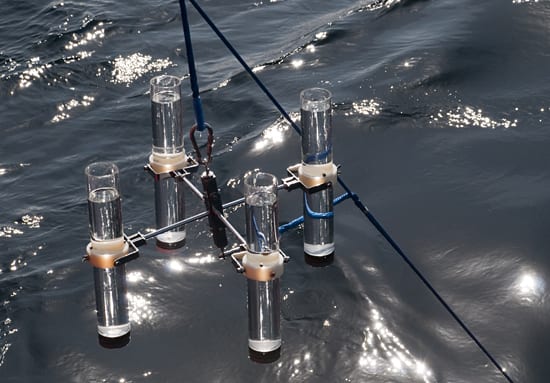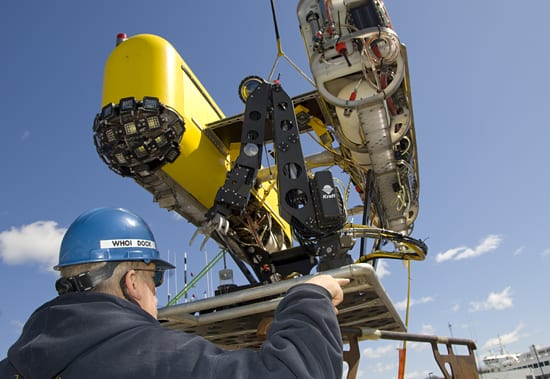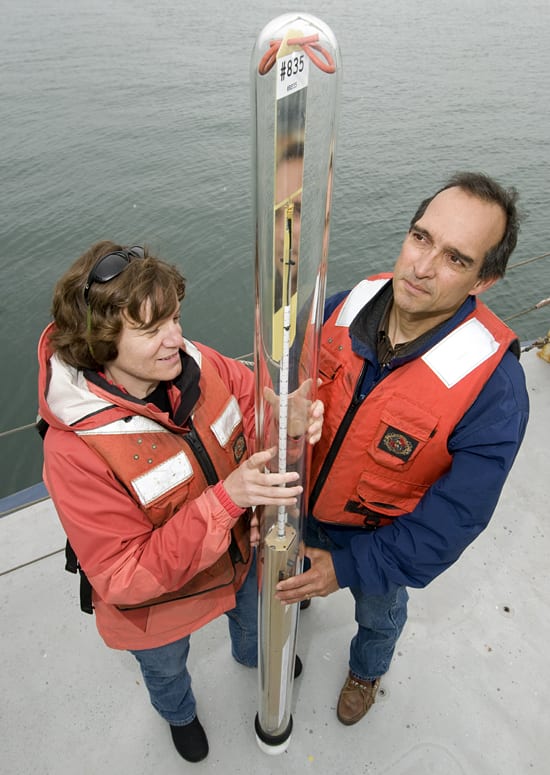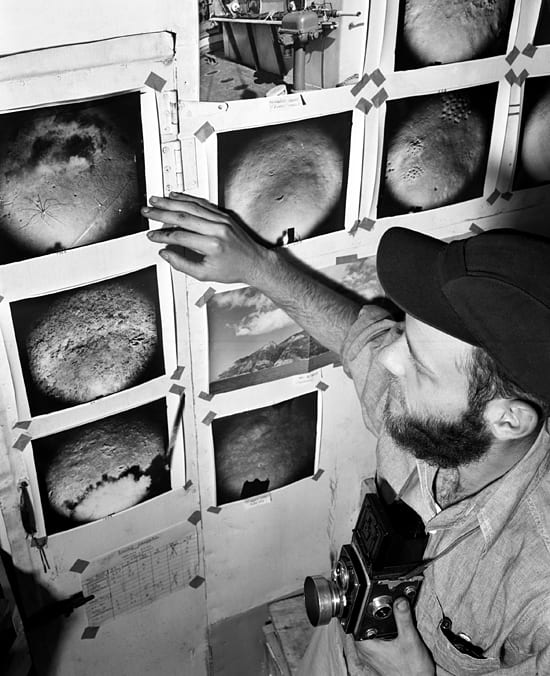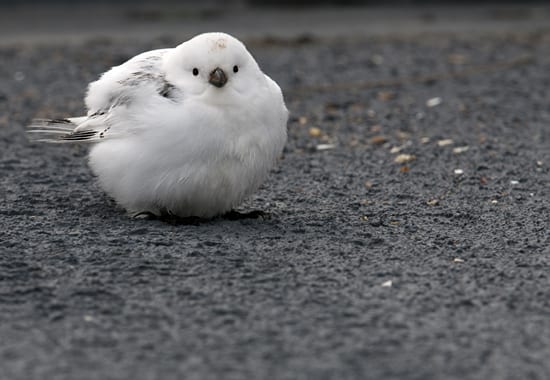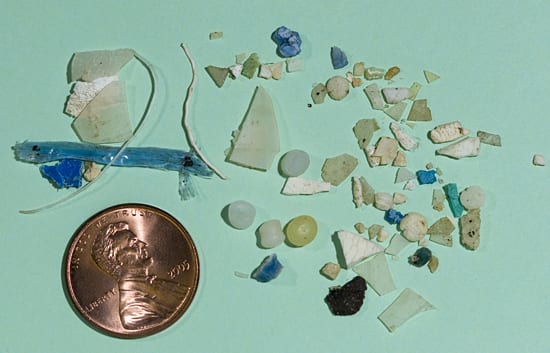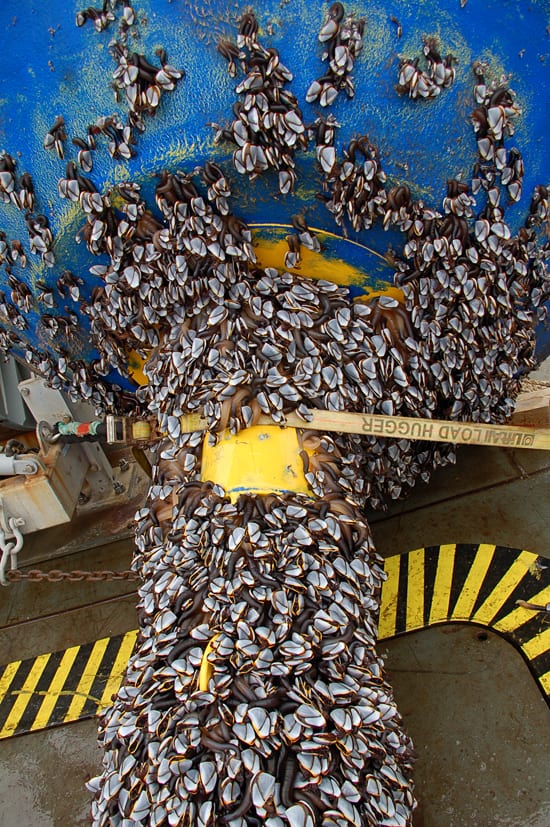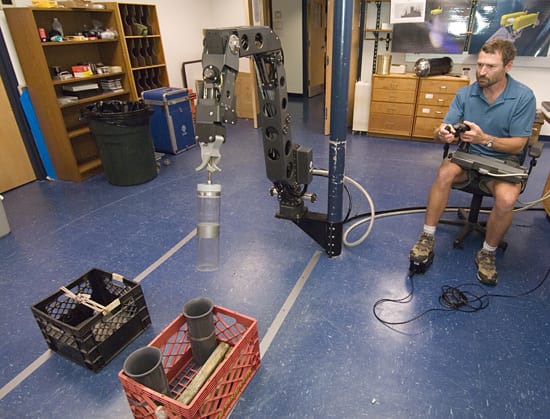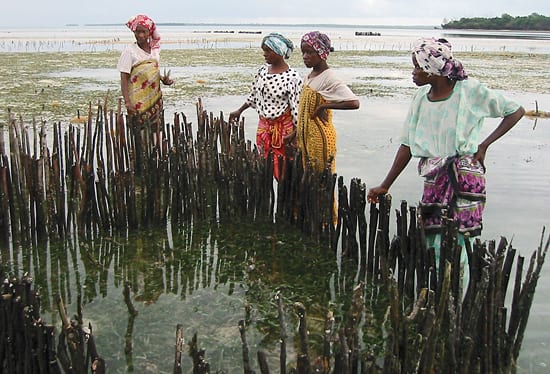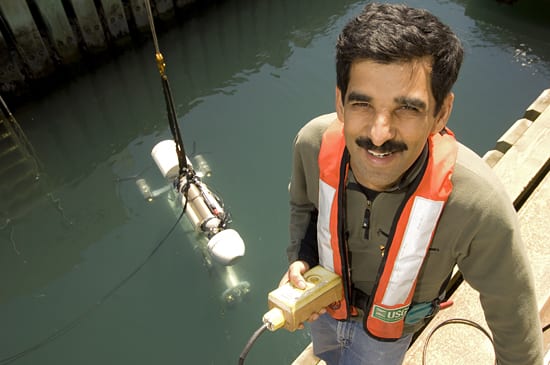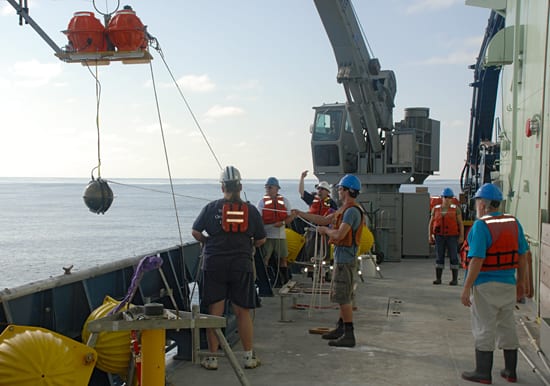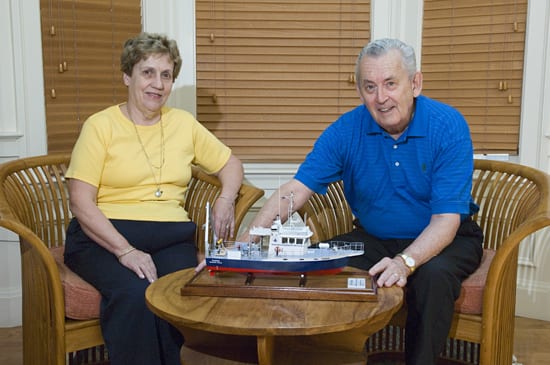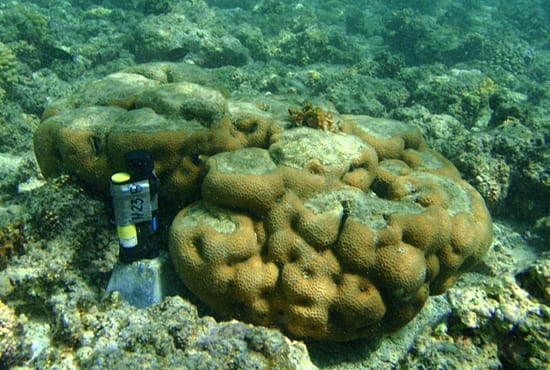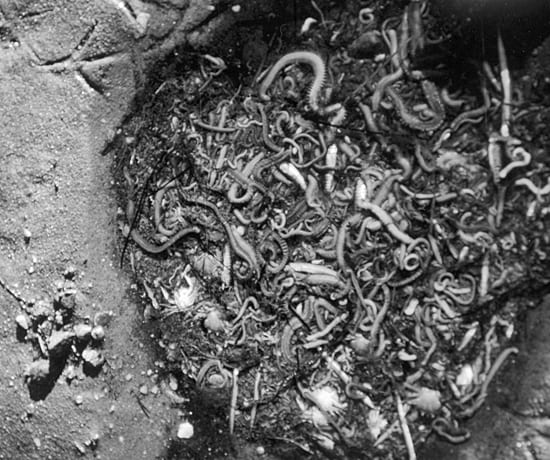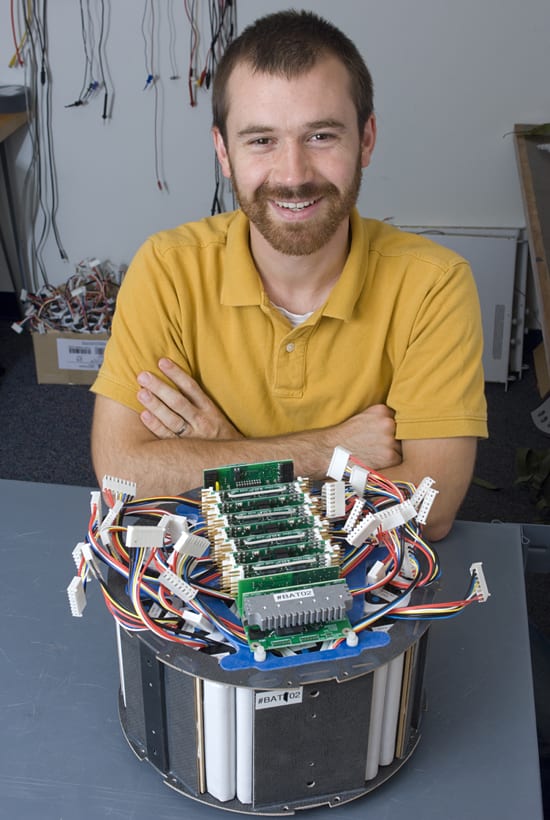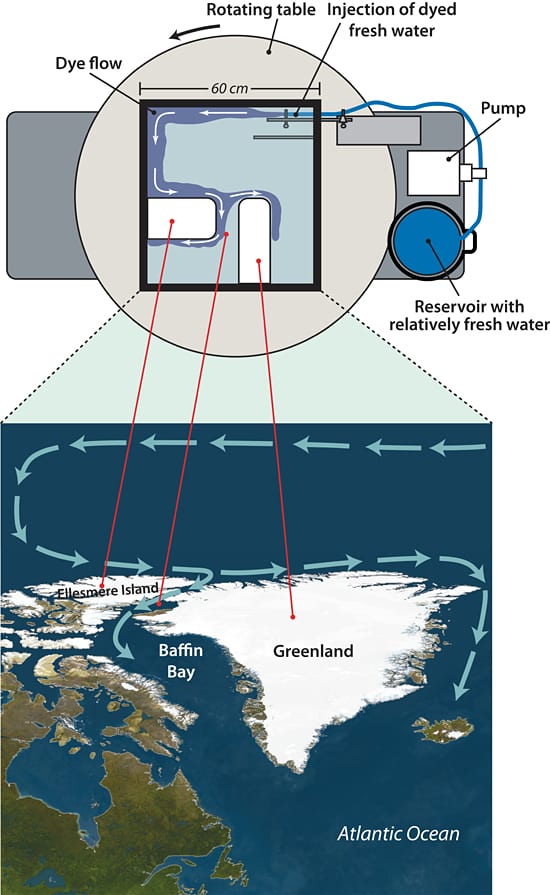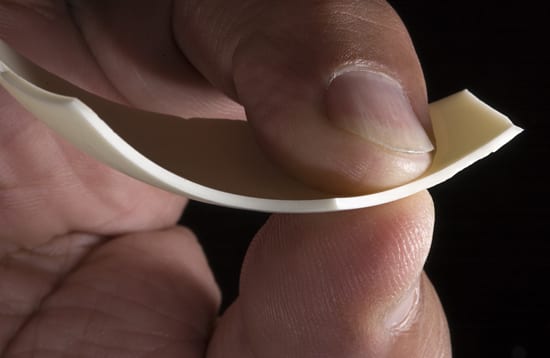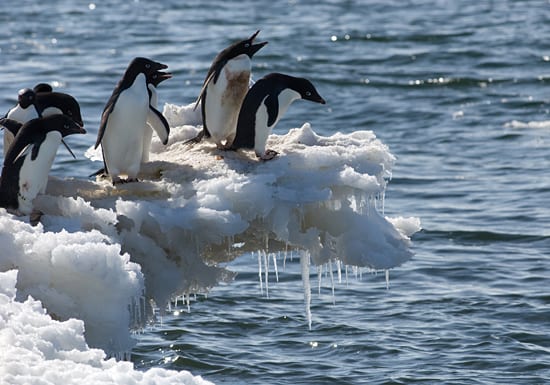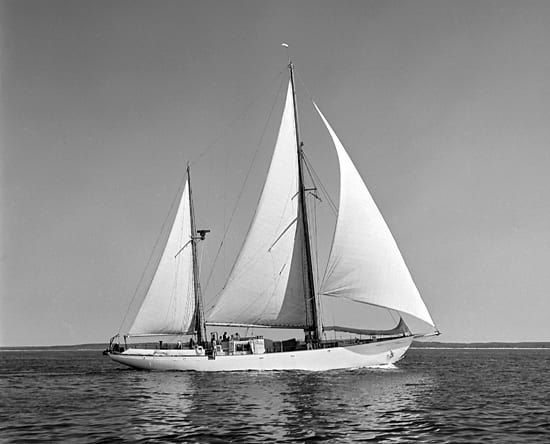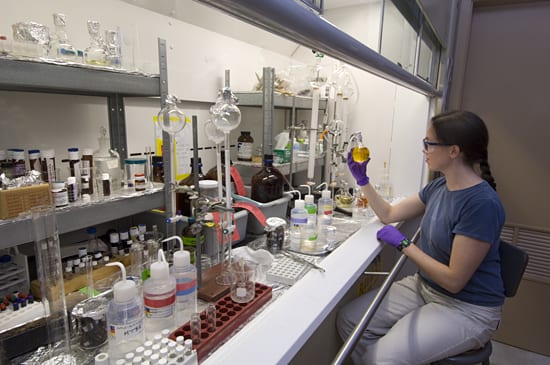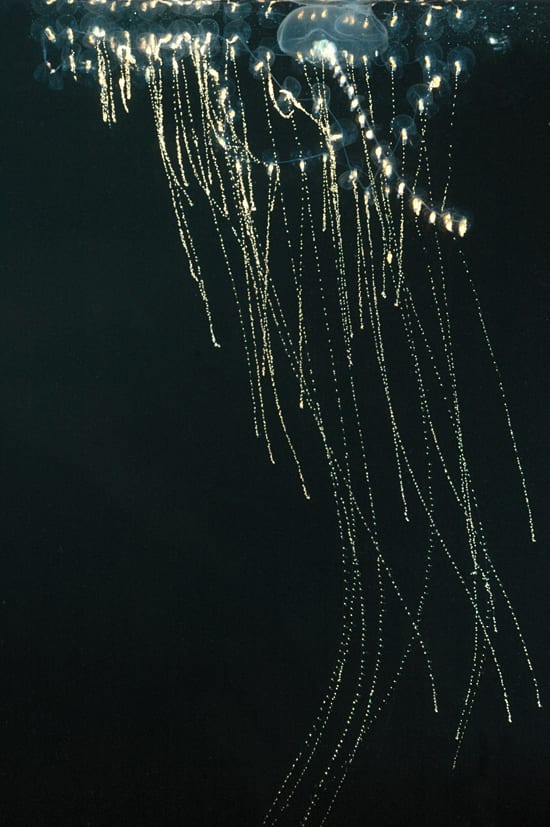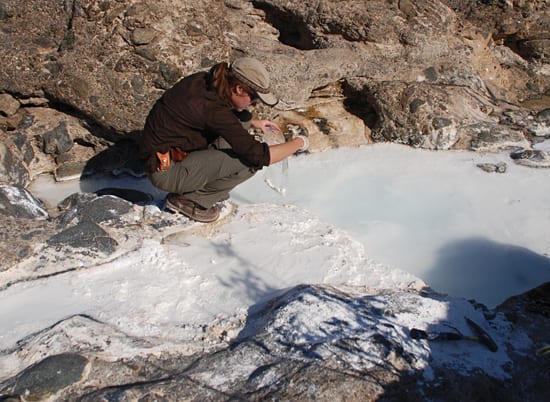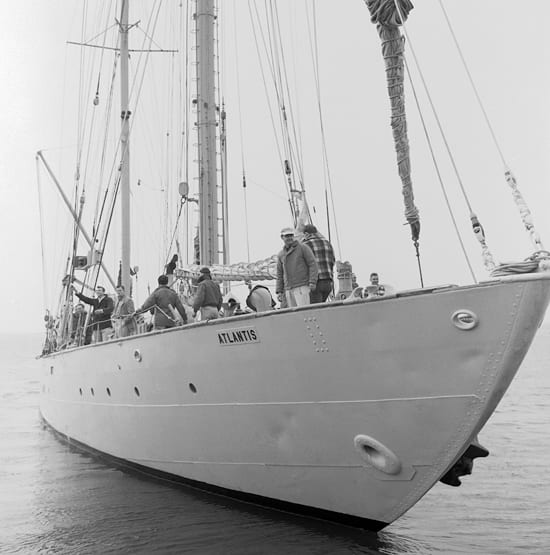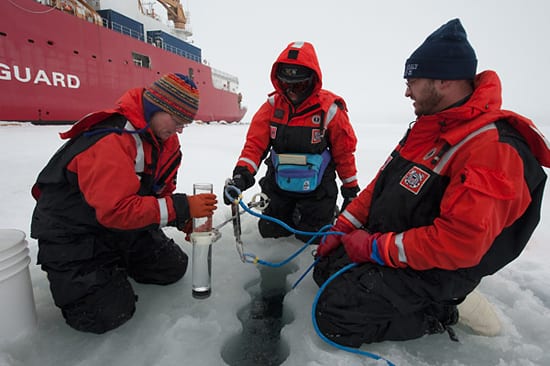Multimedia Items
There’s thorium in those tubes
Sediment traps are containers that scientists place in the ocean to collect tiny sediment or larger accumulations called “marine snow” —bits of organic matter, dead sea creatures, shells, dust and…
Read MoreShining light on the darkest depths
Will Sellers, of the Applied Ocean Physics & Engineering department, helps guide the new deep-sea robotic vehicle Nereus during testing off the WHOI dock in April 2009. Nereus made an…
Read MoreBobbing for data
Physical oceanographer Amy Bower, left, and research associate David Fisichella display a RAFOS Float. These floats are neutrally buoyant, free drifting instruments, which are launched from a ship in the…
Read MorePicture this
Dave Owen developed an interest in deep-sea photography — then a field in its infancy — early in his career at WHOI. During a cruise to the Mediterranean and Aegean…
Read MoreA rare visitor
A McKay’s Bunting is a special sight. Named in honor of American naturalist Charles McKay, these birds summer and breed on a few remote islands in the Bering Sea, and…
Read MoreI want to say one word to you… plastics
Pieces of plastic collected by one plankton net tow in the surface waters of the Atlantic Ocean at 30°27’N, 55°42.2’W in October, 1992 (penny shown for scale). These samples are…
Read MoreHitchhikers of the ocean kind
A buoy recently recovered off the coast of California was encrusted with a large number of pelagic gooseneck barnacles. The buoy had only been in the ocean for six months,…
Read MoreArmed and Dexterous
Research Engineer Matt Heintz tests the capibilities of a manipulator arm that he helped develop for the new deep-diving vehicle Nereus in the WHOI Deep Submergence Lab. In this case,…
Read MoreRaising shellfish
Women from Unguja Ukuu-Tindini on the island of Zanzibar off Tanzania examine a shellfish farm that they are learning to set up and tend. Hauke Kite-Powell, a Marine Policy Center…
Read MoreEight and counting
Hanumant Singh, of the WHOI Applied Ocean Physics and Engineering Department, tests a newly-built SeaBED autonomous underwater vehicle (AUV) off the WHOI dock in May 2009. Eight of these AUVs…
Read MoreSeismic recovery
The crew aboard the R/V Atlantis handle a line during recovery of an ocean bottom seismometer (OBS) in January 2009. The OBS was just one of 41 deployed along the Quebrada,…
Read MoreA Model Citizen
“I’ve built models my entire life,” said James Orr, honorary member of the WHOI Corporation. After closely following the construction of the R/V Tioga and visiting the shipyard and the…
Read MoreWarm days and cool nights
This Red Sea coral reef, located west of Saudi Arabia, is being monitored as part of a collaborative project with King Abdullah University of Science and Technology (KAUST). Using the…
Read MoreOil spill victims
Oil washed into the West Falmouth marsh and tide pools after a 1969 spill, with disastrous consequences for these small marine animals in a tidal pool. Though the marsh now…
Read More4,000 Batteries Under the Sea
Daniel Gomez-Ibañez is an engineer at WHOI who specializes in developing battery systems to power deep-submergence vehicles, including the new “hybrid” deep-sea explorer Nereus, which successfully dove to Challenger Deep…
Read MoreHow the ocean works
Claudia Cenedese, scientist in the WHOI physical oceanography department, studies how water in the ocean moves. But she does it inside the box—by doing laboratory experiments that simulate oceans in…
Read MoreFloating on shells
It took a village of engineers to build the new hybrid deep-sea vehicle Nereus, which dove to 10,902 meters (6.8 miles) in the western Pacific Ocean’s Mariana Trench on May…
Read MoreNo, no, YOU go first
One Adelie penguin looks doubtfully at the water while another cries out for it to get a move on. No penguin wants to be the first one in, so they…
Read MoreThe Aries
The Aries, a 93 foot ketch, arrived in Woods Hole in March of 1959 as a gift from R.J. Reynolds. She was refitted as a research vessel by June and…
Read MoreExtracting answers
Joint Program graduate student Kristin Pangallo’s childhood wish to work with whales and dolphins branched into a bachelor’s degree in chemistry then a job as a research technician at WHOI.…
Read MoreA curtain descends
Siphonophores, relatives of jellyfish made of compound units, drift in the endless space of the open ocean. Their many tentacles, studded with batteries of stinging cells, form a beaded curtain…
Read MoreDesert snow?
A trip to the snow? Actually, it’s mineral, not ice, as WHOI graduate program student Evelyn Mervine collects recently-deposited carbonate from a highly alkaline spring in the Samail Ophiolite—an area…
Read MoreFirst lady of the sea
Atlantis (1931-1964), which was the first Woods Hole Oceanographic Institution (WHOI) research vessel, pulls away from the WHOI dock in 1960. The first ship built specifically for interdisciplinary research in…
Read MoreWorking under icebreaker’s “Guard”
Working out on the ice in the reassuring presence of the U.S. Coast Guard icebreaker Healy, scientist Katrin Iken (left, from the University of Alaska-Fairbanks)—assisted by technician Pat Kelly (right,…
Read More
